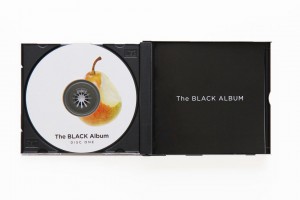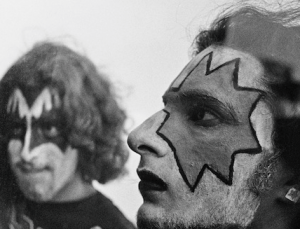50 years ago today, Bob Dylan met the Beatles after their Shea Stadium gig and gave them joints of marijuana. And the Beatles liked it!
Consequences of Sound has some details and some superfluous but totally enjoyable clips.
History is fun!
50 years ago today, Bob Dylan met the Beatles after their Shea Stadium gig and gave them joints of marijuana. And the Beatles liked it!
Consequences of Sound has some details and some superfluous but totally enjoyable clips.
History is fun!
 In real life Ethan Hawke made a mixtape of his favorite songs by the Beatles during their solo career to give to his daughter, apparently after he and Uma divorced.
In real life Ethan Hawke made a mixtape of his favorite songs by the Beatles during their solo career to give to his daughter, apparently after he and Uma divorced.
At the same time, over the last 12 years or so, he was making a move with Richard Linklater called Boyhood, which is the story of a boy from the age of five to 17. The trick of the movie is that it was shot with the same actors over a 12 year period. Ethan Hawke plays the boy’s father, and he presents him with the Black Album after the fictional couple, the boy’s parents divorce.
This article at Buzzfeed publishes the song list for three disc worth of tunes (too many), and the liner notes that Hawke gave his daughter and rewrote for the movie’s purposes. Beatles experts may have something to say about its interpretation of history, but I would say the whole thing is kind of lovely. Much nicer than How Do You Sleep?
 Amy Rose Spiegel was 22 when she wrote this story at Buzzfeed, about going to see the Replacements during their reunion tour in 2013.
Amy Rose Spiegel was 22 when she wrote this story at Buzzfeed, about going to see the Replacements during their reunion tour in 2013.
She was a one year old when the Mats broke up originally, and grew up and into a fan who never expected to get a chance to see them live. But then she did.
Along the way she has some observations about teens and musical passion and the Mats, as well as the way music imprints on teens and how teen taste reflects teen values, that seem to fit here.
Spiegel prefers the introspective songs, by the way, which in the piece seems a little sadly stereotyped. But fortunately she will put up with the noisy ones, because they matter to her, even if she doesn’t like them as much.
Mark Joseph Stern, at Slate, who is still in his 20s, explains why the music we love as teens (from 12 to 22) is the music we remain most passionate about our whole lives.
The fact that this is pretty much true we see in evidence with almost every post here at Rock Remnants, and we all have a lot more water under the bridge than Stern does.
I’m sure his explanation isn’t quite the whole of the answer, but in general terms it feels pretty much right (and it involves brain imaging!). What came to mind for me, one of those teen moments, was a memory of reading in Lisa Robinson’s Hit Parader magazine, maybe when I was 13, about Jerry Lee Lewis’s song Breathless as the apotheosis of rock ‘n’ roll.
I went to the music store in my home town and found a copy of the single in the oldies section, and probably paid a quarter for it. If memory serves it was b/w High School Confidential. I brought the 45 home and put it on the fat spindle on my cheap record player. I was tremulous, with heightened expectations, almost giddy I recall. I anticipated something incredible, and when I pushed play, I got something I’d never heard before.
Bye bye Herman’s Hermits, hello better stuff of all sorts. I’ll never forget that and now I know better why.
 Erin Feinberg has just published a book called Diehards
Erin Feinberg has just published a book called Diehards, of her pictures of music fans.
Slate’s Behold blog has a nice sampling. Yes, that Kiss picture is a detail from one of her shots.
Doesn’t the guy on the right look like Gotye?
Doesn’t Gotye’s hit song sound like the Police?
Or is it just the facepaint?
I came across this story today, by Anil Dash, which celebrates the 30th anniversay of Prince and the Revolution’s Purple Rain by dissecting it. Full of excellent detail, it also illustrates our current linking problem. Many of his links are to Spotify tracks, which don’t play for me. I hope they do for you.
But what was weird and wonderful and included in Dash’s story was the video of James Brown, Michael Jackson and Prince on the same stage, maybe not at the same time but nearly so. You don’t want to miss this.
Yes, the Doobies singer, the white soul singer, the terribly popular terribly MOR singer everyone who had any taste hated. Harvey writes too about something called Yacht Rock, which we don’t usually cover here, but the clip of Cris Cross playing with the Roots wearing yachting caps is worth the click.
And so is the long shaggy dog of a story.
Here’s a cut to warm up with…
Why it’s a classic album cover created using emoji!
A story at Fast Company explains how the novelist Wesley Stace, concurrently the singer-songwriter John Wesley Harding, has been creating these clever little icons of iconography and tweeting them out.
Didn’t guess the above album? Follow the link for the answer and more clever examples. Follow him @WesleyStace.
Parting album? Who’s Next.
I may be the only person in the world who didn’t know this song. As a kid record shopping at the SmithHaven Mall I would eye this one covetously because of the cover.
But yesterday, the band Spirit sued Led Zeppelin for copyright infringement. Here’s the song:
Yep, it sounds like Stairway, and there are millions of Youtube videos pointing that out. What seems to be happening here is that Jimmy Page has remastered the whole Led Zeppelin catalog and Spirit’s suit effectively holds that project hostage until it is resolved.
My first though was the Statue of Limitations. Surely that has expired for a song released in the 70s. It turns out that the statute of limitations for copyright infringement is three years, but Spirit could, if it won the suit, collect royalties for new issues of the song over the last three years. Stairway to Heaven, by the way, has earned on average $13M per year for the last 40 years. I’m sure some years were better than others, but that’s a lot of dough.
An attorney named Oliver Herzfeld tells the story over at Forbes, with his opinion about how it’s going to turn out. Looks like Randy California may get as wealthy as Willie Dixon. But what were these guys doing the last 40 years?